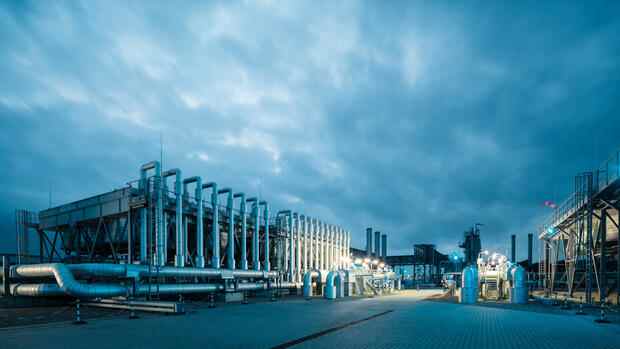“The Nord Stream volume is currently completely missing.”
(Photo: Uniper)
Dusseldorf Freezing is practically forbidden in Germany. This also applies in times of the Ukraine war. To ensure that German citizens have enough gas for heating in winter and that industry can continue to produce, Germany and the EU have agreed that the levels in their gas storage tanks must not fall below certain values.
Germany is aiming for 65 percent fill level by August 1st, and underground gas storage facilities across the EU should be at least 80 percent full by November 1st. Actually. But now it could happen that Europe will soon have to use its reserves, warn experts such as Icis energy analyst Andreas Schröder.
On critical days with particularly high gas demand, European countries could use up to 0.1 percent of their gas storage facilities. In other words: Instead of continuing to store for the winter, the stocks would already be reduced in the summer.
The reason: Nothing has arrived on the most important route for Russian natural gas to Germany since this Monday. The Nord Stream 1 pipeline is undergoing maintenance – usually a routine operation that the public doesn’t take much notice of. But this year everything is different. The German government fears that Russia will allow the gas tap in response to Western sanctions over the attack on Ukraine.
Top jobs of the day
Find the best jobs now and
be notified by email.
Russia denies the accusation that its gas is used as a means of exerting political pressure. But there are initial indications: Unlike in previous years, the Russian gas company Gazprom is not using other lines to compensate for the missing quantities this time. “We are currently missing the Nord Stream volume completely,” says Andreas Schröder.
Heat and drought increase gas demand in Europe
Only a small part of the missing quantities can be made up for by larger imports from Norway and the Netherlands. Schröder analyses, however, that this is far from enough to compensate for the more than 60 million cubic meters of gas that Russia recently delivered daily via Nord Stream 1. And that’s not all.
All in all, Europe’s energy supply is currently threatened by “a particularly critical mix”, according to Andy Sommer, Team Leader Fundamental Analysis & Modeling at the Swiss energy group Axpo Solutions. This also includes the upcoming drought and heat period.
This means that the need for cooling, especially in southern Europe, is increasing sharply and at the same time nuclear power plants would potentially have to be operated with less power. If the level of logistically important rivers such as the Rhine drops due to the drought, less coal could potentially be brought from Rotterdam to the power plants.
The fact that the demand for electricity could increase and the output of nuclear and coal-fired power plants could be reduced is an unfavorable situation: Axpo analyst Andy Sommer warns that gas-fired power plants will soon have to be used more frequently.
Europe already needs more gas in the summer than in other years. Because of the upcoming drought and heatwave, the need for cooling is increasing. At the same time, nuclear power plants would have to reduce their output at very high temperatures.
If, in addition, the level of logistically important rivers such as the Rhine drops, less coal can be brought from Rotterdam to the power plants. “All of this increases the demand for gas, also for electricity generation,” says Sommer. That would happen exactly what Energy Minister Robert Habeck wants to prevent at all costs.
“One to two percentage points less fill level would be manageable”
The European gas storage facilities are currently filled to varying degrees (see chart). According to Andreas Schröder from Icis, the EU states have a certain amount of leeway when it comes to their stocks: “One to two percentage points less fill level would still be manageable.”
The expert hopes that the member states can rely on “a certain amount of neighborly help” if the worst case occurs. With this scenario, market observers believe that Russia will continue to stop deliveries after July 21.
Some analysts assume that Gazprom will resume deliveries via the Baltic Sea pipeline from July 21 at least at the pre-maintenance level. “From an economic point of view, it is better for Putin to deliver a reduced volume at a higher price. But delivering nothing at all won’t do him any good,” says Schröder.
However, this assumption is “an assumption with a lot of risk”. The uncertainties for the time after the maintenance are currently being priced into the gas market.
More: Nord Stream 1 maintenance: That’s what it means when Gazprom shuts down the gas pipeline



